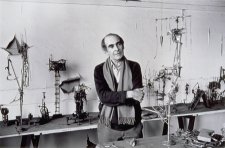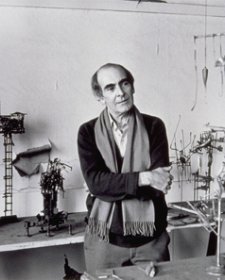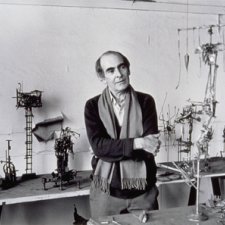Well, I call the thing that I’m interested in the language of forms. That means it’s not just shapes in relationship, it’s not just ticking this box, or this thing against that, it brings the whole person to bear, all the aspects of oneself, I think, all coming through one’s hands – and the mind and the emotions, and the intellectual aspect, everything – the total self, I think, when one’s working properly, if one’s on what I call on one’s rhythm, you know, it’s all flowing through, you know, if one’s really working properly, is using what I call this language of forms.
I find that metal has got certain limitations because it lacks a particular sensuous quality which I think wood and bronze and some of these other things have. I suppose it’s more or less like an inner structure that I have to break open the inside of a carving; that’s what really is the basis of the whole thing, in one sense, is to break open the stone and have a structure within on which later I hope to replace with solid masses which I believe the real art of sculpture is, placing these masses in relation to each other.
And you’ve got all these subtle planes and lines and all these relationships you’ve got to use, which you are doing relatively but in this sort of thing but it’s not as satisfying, I think, to me as a stone carving or a wood carving or something I can carve away in. It all depends on one’s rhythm, if it’s a long slow one or a short one. I like to work on a dozen pieces at once, playing around, taking off, putting on. That’s one thing about metal work which I like, you can put on, take off all the time, but with stone, once you take it off it’s off. But that’s an aspect I like too, you see, so I don’t mind spending three months to six months on one piece. I enjoy that just as much, in the same way.
But at the moment I’m more interested in things happening, or discovering things in a quicker sort of rhythm, I think. I suppose that is why I’m on metal still.













